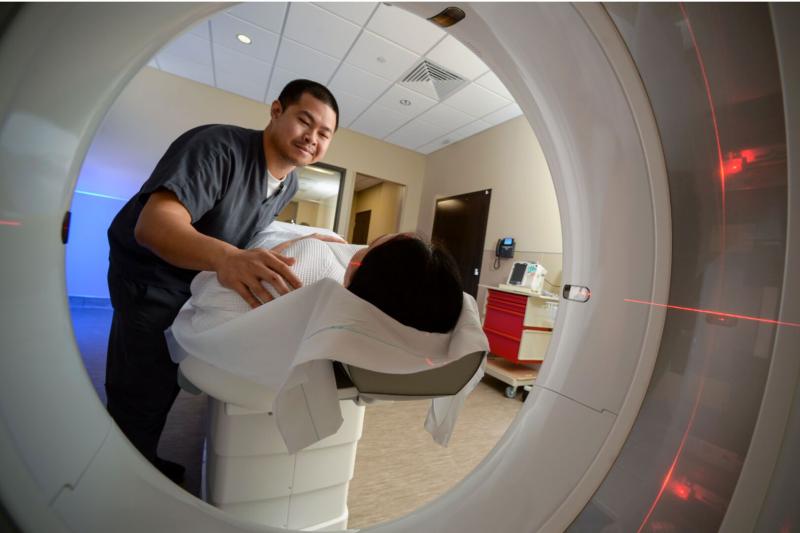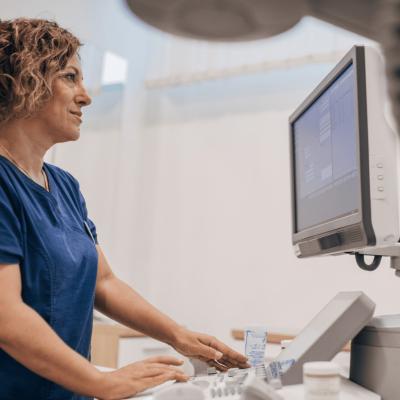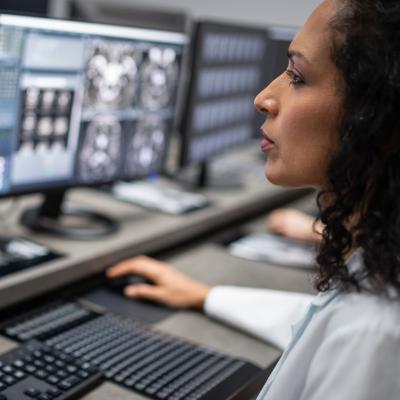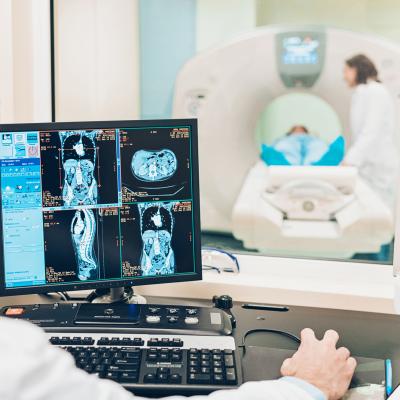- Lukus Staup, BS, RT(R)(MR)

If you previously wrote off Radiologic Technologist as a career due to perceived occupational risk, this blog post is for you. Misconceptions and the general public’s understanding of radiation continue to be a struggle for the scientific community, even now, 76 years after atomic bombs were dropped on Hiroshima and Nagasaki, Japan. Those two events, along with other disasters, such as Chernobyl and Fukushima Daiichi nuclear disasters, have continued to contribute to the public’s perception and the scientific knowledge about radiation and the biologic effects that radiation can have on humans.
At this point, we know more about radiation and its impact on our bodies than ever before. In conjunction with the technological advancements made to X-ray equipment, we now find that both radiologic technologists and patients receive less radiation dose than ever before.
In fact, many other occupations carry an associated occupational risk much greater than those industries that work with or around ionizing radiation. The U.S. Bureau of Labor Statistics’ most recent Census of Fatal Occupational Injuries from 2019 found that jobs such as transportation, construction and extraction, fishing and hunting, and law enforcement/military carried the most occupational risk of fatal accident, according the U.S. Bureau of Labor Statistics.
This data does not infer that there is no risk of working with ionizing radiation, but that risk is very low and safety precautions are regulated. To account for the inherent risk of exposure to ionizing radiation, organizations such as the International Commission on Radiological Protection (ICRP) and the National Council on Radiation Protection and Measurements make recommendations for monitoring personnel in these types of occupations. The Nuclear Regulatory Commission federally mandates these recommendations so that, as a worker in a field where you could be exposed to ionizing radiation, you are significantly limiting your exposure.
For radiologic technologists, occupational exposure to ionizing radiation is also managed proactively by a medical physics and radiation safety department within a hospital facility or system. This department is tasked with establishing and managing a radiation safety program. Based on the Occupational and Safety and Health Administration’s website, at a minimum, this type of program includes:
- Qualified staff (e.g. Radiation Safety Officer, health physicist) to provide oversight and responsibility for radiation protection policies and procedures.
- Education and training for all employees who utilize ionizing radiation in their modality.
- A dosimetry program in which personal exposure monitoring is conducted, as required by federal or state regulations, for external dose and, as needed, for internal dose.
- Surveys and area monitoring to document radiation levels, contamination with radioactive materials, and potential worker exposures.
With this intense focus on healthcare worker safety, everything from the architectural design of a hospital or care center’s Imaging Department to the equipment that technologists use is designed to reduce exposure to ionizing radiation.
As mentioned, our knowledge of how our bodies interact and respond to radiation is growing year by year. The ICRP, which is the global authority on radiation, continues to make recommendations on radiation protection using the most current data gleaned from those tragic radiation events that have occurred in our history. The ICRP recently made changes to the radiosensitivity values (tissue weighting factors) of specific organs in our bodies. For instance, in 2007, the tissue weighting factor of male and female reproductive organs was changed from 0.2 to 0.08. This means that reproductive organs are not as radiosensitive as we initially thought. This development significantly impacted the way radiologic technologists practice clinically, including the discontinuation of patient fetal and reproductive organ shielding.
Because our source of knowledge about biologic effects of radiation come from accidents where individuals were exposed to significant acute radiation exposures, there is a substantial lack of knowledge pertaining to low-dose radiation. In fact, there is no direct evidence of an increased risk of non-cancer diseases at low doses, according to a 2020 Frontiers in Public Health journal article on radiation safety and hormesis. However, from preliminary published studies, evidence instead suggests that exposure to low-dose radiation has the potential to “elicit an adaptive response that enhances defenses and protects the organism,” the 2020 article states. This concept of biologically beneficial radiation exposure is called “radiation hormesis.” Although not currently used in the field of radiation protection, the amount of evidence in the last 10 years in favor of radiation hormesis appears to be building.
Ultimately, radiologic technologists are caretakers or healthcare professionals. As with many other medical procedures that present risk, radiologic technologists must navigate the risk of utilizing ionizing radiation to perform an exam that delivers a diagnosis that directs all future treatment of their disease. With expertise and compassion, radiologic technologists are essential members of the healthcare team caring for patients during their most troubling and painful moments.
About the Author

Lukus Staup, BS, RT(R)(MR), serves as a Radiography and Advanced Imaging Instructor at AdventHealth University. Learn more about AdventHealth University’s Radiography program in Orlando, AdventHealth University’s Radiography program in Denver, and AdventHealth University’s online programs in MRI, Vascular Interventional, and CT.


